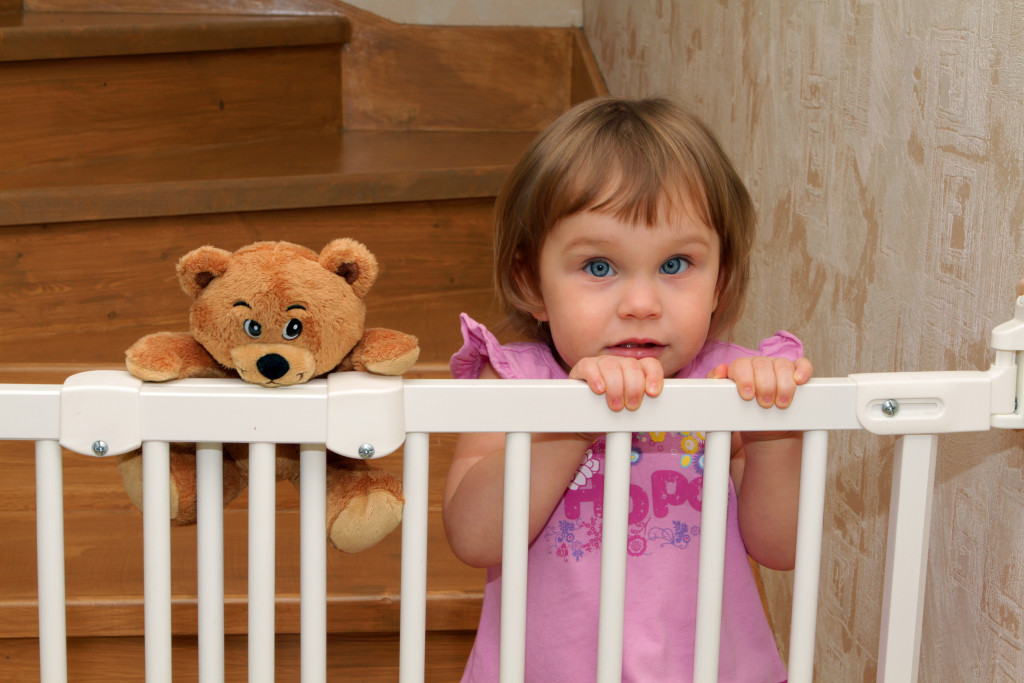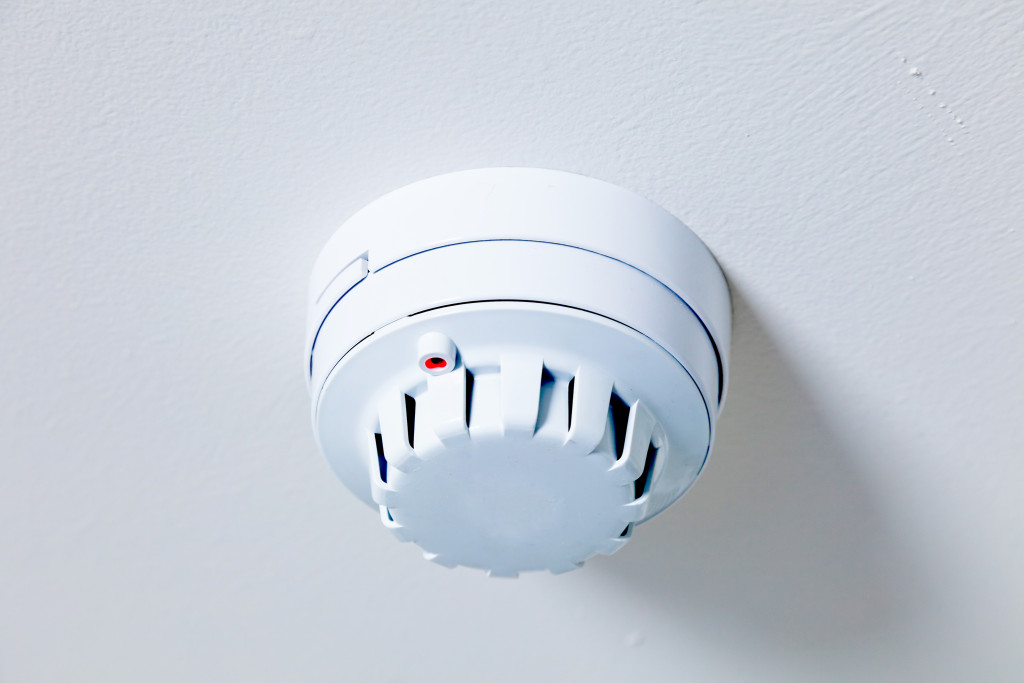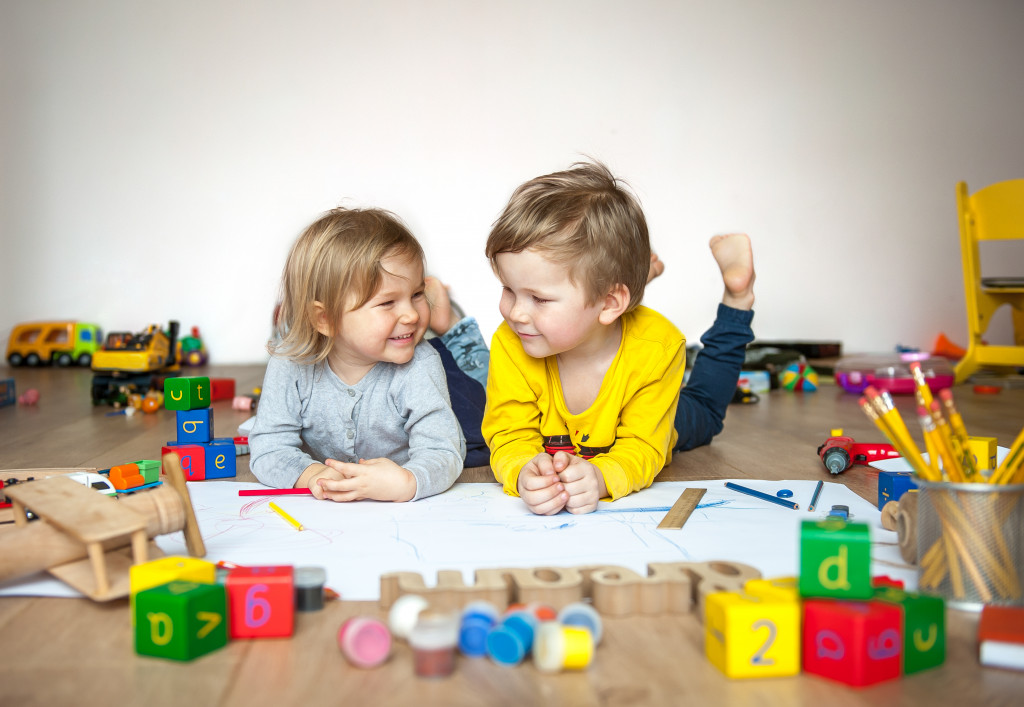- Secure furniture and TV sets with straps or anchoring devices to prevent injuries.
- Install safety gates for stairs and potentially hazardous areas around the house.
- Use outlet covers to protect your children from electrocution.
- Put up smoke and carbon monoxide detectors and maintain them well to alert you of potential fires or gas leaks.
- Label all chemicals you use at home and store them out of reach of your kids.
The safety of your family, especially your little ones, is of utmost importance to you. As a parent, you’re always looking for ways to provide a secure environment for your children to grow up in. While you may not have direct control over everything that could cause harm, you can take some precautions to make the home safer for your kids. This post will discuss some home DIY tips that you can use to ensure your children are safe at home.
1. Secure Furniture and TV:
Children love to explore and climb on furniture, which can be dangerous if not secured. You can use furniture straps or anchoring devices to secure dressers, bookshelves, or any unstable furniture. Also, if you have a TV set, it’s crucial to mount it on a wall or use a TV strap to avoid it being knocked down by your child.
Make sure that any straps or anchoring devices are securely screwed in and can’t be easily removed. If you can, opt for straps with a locking mechanism. This will ensure that the straps are secure and can’t be undone by children.

2. Use Safety Gates:
If you have stairs or rooms that you don’t want your children to access, then safety gates can be very useful. You can install the gates across the doorways or at the top and bottom of stairs to ensure your child cannot access areas that could pose a risk. Make sure to use gates that are fitted with a locking mechanism and can withstand your child’s weight.
Of course, you can also use gates outdoors. For example, if you have a swimming pool in your garden, you can use a steel gate or fence to keep your children safe. This will ensure that they don’t wander near the pool without supervision. You can easily order a custom gate from your local steel supply store. They can cut it to the exact measurements of your pool’s perimeter, so you just have to install it, and you’re good to go.
3. Install Outlet Covers:
Electrical sockets are tempting for children, and they may try to stick their fingers or objects into them, which can cause serious injuries. You can install outlet covers or plug protectors to keep your child safe. Different kinds of outlet covers are available, including ones that cover the whole socket or have sliding covers, which means you don’t have to remove them every time you want to use the socket.
4. Put Up Smoke and Carbon Monoxide Detectors:
Smoke and carbon monoxide detectors are essential in any home, especially if you have children. These devices can alert you of potential fire or carbon monoxide hazards before they become life-threatening. But properly maintaining these detectors is essential to keep them functional. Here are some tips:
a. Test the detectors monthly
You want to make sure that they’re working correctly. For smoke detectors, you can press the test button; for carbon monoxide detectors, you can use a special testing device.

b. Change the batteries every six months
It’s important to regularly replace the batteries in your smoke and carbon monoxide detectors. Depending on the type of detector, you may need to replace the batteries twice a year or less.
c. Clean and maintain the detectors
Dust and debris can accumulate on the detectors over time, affecting their performance. To prevent this, clean the sensor regularly using a vacuum cleaner or a damp cloth.
d. Replace the detectors every ten years
Smoke and carbon monoxide detectors have a limited lifespan of about ten years. After that, they may be unable to detect fire or carbon monoxide anymore, so replacing them as soon as possible is important.
5. Label Household Chemicals:
Every home has different household chemicals, including cleaning agents, laundry detergents, and pesticides. These chemicals can be harmful to children if not handled properly. To ensure your child doesn’t get into trouble, you can label all the chemicals with their names and store them out of reach. Also, avoid storing different chemicals together, as they can react with each other and cause dangerous fumes.
As a parent, you want to provide a safe environment for your kids, and using some home DIY tips can help you achieve that. By securing furniture, installing safety gates, using outlet covers, putting up smoke and carbon monoxide detectors, and labeling household chemicals, you can create a safe home for your little ones. With these tips, your children will be safe and sound in the comfort of your home.




